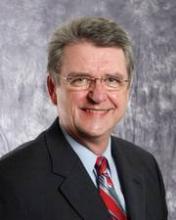Patient-centered medical homes should be led by physicians, not nurse practitioners, according to a report by the American Academy of Family Physicians.
The report emphasizes the importance of teamwork and collaboration between the two professions, but it raises concerns about the idea of filling the physician shortage gap with nurse practitioners.
"Workforce policies and payment systems must recognize that training more nurse practitioners and physician assistants neither eliminates the need nor substitutes for increasing the number of physicians trained to provide primary care," the authors wrote.
Titled "Primary Care for the 21st Century: Ensuring a Quality, Physician-led Team for Every Patient," the report has been a project of AAFP Board Chair Dr. Roland A. Goertz.
The 2010 Institute of Medicine report "The Future of Nursing" was one of the reasons Dr. Goertz decided to issue a position paper. "I started with every intention to try and find a way to resolve essentially what are two different model proposals going forward," he said in an interview.
The patient-centered medical home (PCMH) model has been around for decades, but it began gaining traction during the past decade, especially with the passage of the Affordable Care Act.
Under the model, every person or family would have a provider who serves as their first point of contact for health care. The goal is to lower costs by reducing fragmentation and improving the quality of patient care. And primary care stands at the center of that model.
But the shortage of primary care physicians has prompted "a significant amount of discussion about expanding the role of nurse practitioners to practice independently and direct medical homes without a physician on staff," Dr. Goertz said during a briefing.
That expansion of nurse practitioners’ roles, however, takes the health care system "in opposite and conflicting directions," he cautioned. "Americans shouldn’t be forced into this two-tiered scenario."
Splintering the PCMH model into too many variations may threaten its success, Dr. Goertz noted. "If you have 10 or 20 versions of patient-centered medical homes, you may never prove that it can do what it was designed to do."
Currently, nurse practitioners can practice independently in 16 states and the District of Columbia. While several states have their own criteria for recognition of PCMHs, none of the main accrediting bodies, including the Joint Commission, requires a PCMH to be run by a physician, according to information from the nonpartisan Patient-Centered Primary Care Collaborative.
The National Committee for Quality Assurance has recognized some nurse-managed clinics as medical homes, according to the collaborative.
The AAFP’s report wasn’t a surprise to the leadership at the American Academy of Nurse Practitioners.
"They’ve been saying this all along, and we’re disappointed that they keep saying this," Jan Towers, Ph.D., director of federal health policy and professional affairs at AANP, said in an interview. "There are so many patients out there, and there will be more," said Dr. Towers, referring to the parts of the Affordable Care Act that will insure millions of Americans by 2014. "We’re not trying to take anything from [physicians]."
AANP also issued a statement in response to the AAFP’s report, calling it "misleading." "As our nation looks to address health care provider workforce challenges, we must embrace the diversity of care models that multiple disciplines sharing overlapping knowledge and skills can offer our county," AANP President Angela K. Golden said in the statement.
The American Academy of Family Physicians’ report highlights the differences between the training and education of physicians and nurse practitioners. Primary care physician complete 11 years of education and clinical training, compared with 5-7 years for nurse practitioners.
That difference in training "brings breadth and depth to the diagnosis and treatment of all health problems, from strep throat to chronic obstructive pulmonary disease, from stress headaches to refractory multiple sclerosis," the AAFP report noted.
But, the AANP’s Dr. Towers countered, "Do you need to go to school for all that time to become a good primary care provider?"
The American Academy of Family Physicians also cites surveys from the American Medical Association, in which more than 90% of patients said that a physician’s years of education and training were vital to patient care, and three out of four said they preferred to be treated by a physician.
The AAFP report acknowledges the nation’s shortage of nurses, physician assistants, and other health care professionals, and it provides several recommendations to address the primary care physician shortage, which will reach 45,000 by 2020, according to the report. The recommendations include training more physicians by increasing funding for primary care physician education, helping medical students with their debt, and improving primary care physician payments to make it a more attractive specialty to medical students.


